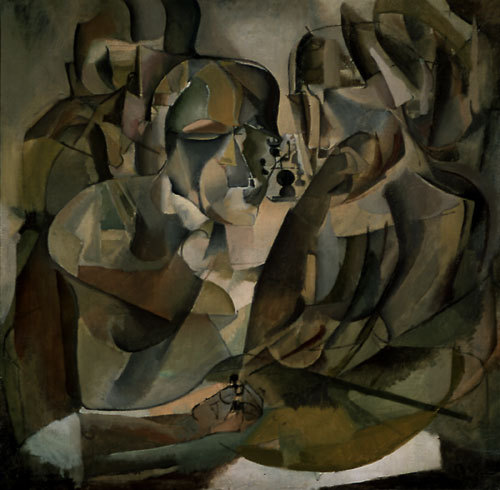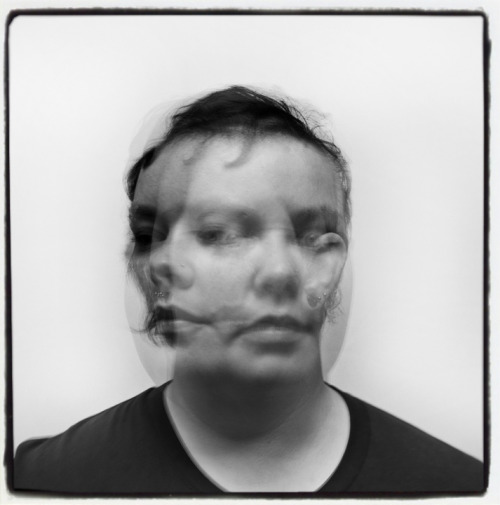I am wandering in my own thoughts thinking that this
is merely the interaction between two chess players in deep concentration, but
as always a little research brings me on the most amazing cyber journeys. Thank
you, technology.
Interpreting this paining can be a little hard due
to its abstractedness. Though, it is illustrated that the chess player on the
left back in pondering for his opponents move. It would seem like he (most
likely a he) is whistling ergo the small black abstract figures in the middle
of the image. If one put great focus, it looks as if there is resembles of a
king (possible the chess piece most observed by a player, other figures are too
irregular to interpret for me, but also I see what could resemble a Caribbean
flamingo.
Here is a close up, but I cannot completely interpret
this without saying that it is the player’s soul’s soundscape.
Now to the part of the image that I find
interesting, the second players constantly moving head. It would look like he
chess player is taking sneak peeks at us, audience, the chessboard, and just in
the general, his surroundings. I say that hence the contour that is manipulated
with the gradient of the represented colors. Observe the contour of his head
and his resting elbow, and left underarm.
Here is a visual example of my observation of the
second mentioned chess player.
I hope this makes my point clear. Our artist has an
extremely difficult relationship with the game, chess, and that is how he
resembles his everlasting spark.
Sources:
1. http://web.ebscohost.com/ehost/pdfviewer/pdfviewer?vid=11&sid=8f3c9b44-02b6-4f54-98b5-5a4a102bf146%40sessionmgr14&hid=19
Link number one does not work properly due to the fact that it is a educational institution research base, so here is some information that will help you look up what I read to create my blog. Enjoy the search!
Authors:
Cross, Lowell
Source:
Leonardo Music Journal; Dec1999, Vol. 9 Issue 1, p35-42, 8p
Document Type:
Article
Subject Terms:
*ELECTRONIC music
Reviews & Products:
REUNION (Theatrical production)
Abstract:
The author chronicles his involvement in Reunion, a 1968 collaborative performance featuring John Cage, Marcel Duchamp and Teeny Duchamp, with electronic music by David Behrman, Gordon Mumma, David Tudor and Lowell Cross. After addressing some misconceptions about Reunion, the author outlines specific details about the conditions surrounding the performance and the sound-distributing chessboard he built, then offers an interpretation of the event. [ABSTRACT FROM AUTHOR]
Copyright of Leonardo Music Journal is the property of MIT Press and its content may not be copied or emailed to multiple sites or posted to a listserv without the copyright holder's express written permission. However, users may print, download, or email articles for individual use. This abstract may be abridged. No warranty is given about the accuracy of the copy. Users should refer to the original published version of the material for the full abstract. (Copyright applies to all Abstracts.)
ISSN:
09611215
DOI:
10.1162/096112199750316785
Accession Number:
5337412
Database:
Academic Search Complete
Link number one does not work properly due to the fact that it is a educational institution research base, so here is some information that will help you look up what I read to create my blog. Enjoy the search!



No comments:
Post a Comment